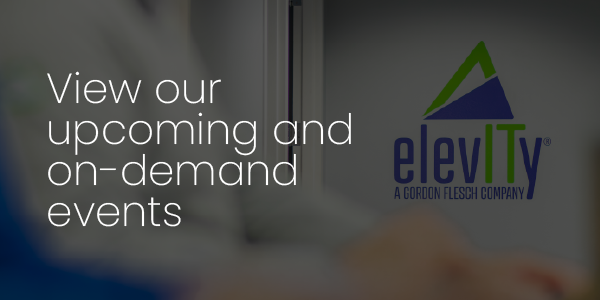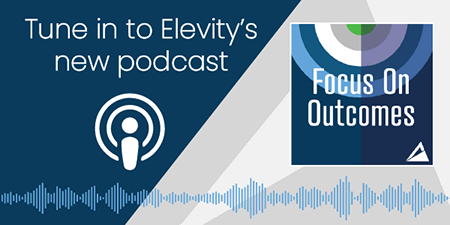Cybersecurity has come a long way since the days of simple passwords. In the 1980s, computer worms were the big worry. By 2000, the ILOVEYOU virus spread like wildfire through email, waking businesses up to the reality of digital threats. Fast forward to the 2010s, and breaches at businesses such as Target (2013), and Equifax (2017) that exposed millions of records, proving that no industry is immune. The 2020s raised the stakes even higher with supply chain attacks like SolarWinds (2020) and multiple healthcare organizations experiencing data breaches which exposed the medical records of millions of patients. Today, cybercrime costs are projected to reach $1.2 trillion globally, driven by AI-powered phishing and cloud vulnerabilities.
How does the history of cybersecurity influence your business today? Cybersecurity’s evolution isn’t just a fascinating timeline—it’s a wake-up call. So, how do modern workplaces turn lessons from the past into strategies that protect their future? Let’s break it down by industry:
- Healthcare: Protecting Patients and Peace of Mind
- Manufacturing: Securing the Modern Factory Floor
- Professional Services: Guarding Client Trust in a Digital World
Each industry faces unique cybersecurity challenges—and the strategies to combat them aren’t one-size-fits-all. Read on! We’ll dive into what makes these sectors vulnerable and how they can stay ahead of evolving threats.
Healthcare: Protecting Patients and Peace of Mind
Healthcare organizations are prime targets for cybercriminals because patient data is highly valued on the dark web. Add in the pressure of HIPAA compliance and the rise of internet-connected medical devices and the stakes couldn’t be higher.
Top Threats:
- Ransomware attacks that lock critical systems and delay care
- Phishing scams targeting staff with fake insurance or billing notices
- IoT vulnerabilities in medical devices and smart equipment
3 Smart Strategies:
- Encrypt Everything– From patient records to email attachments, encryption ensures stolen data is useless.
- Zero Trust Access – Don’t assume anyone is safe. Verify every user and device before granting access.
- Regular Staff Training – Human error is the #1 breach factor. Teach employees to spot phishing and follow secure login practices in a “security-first” culture.
Healthcare security isn’t just about compliance—it’s about saving lives. A single breach can disrupt surgeries, compromise privacy and damage trust. The good news? With proactive strategies, you can keep care flowing and data locked down.
Manufacturing: Securing the Modern Factory Floor
Manufacturers are no longer just building products—they’re running smart factories packed with IoT devices, robotics, and connected supply chains. That connectivity boosts efficiency, but it also opens the door to cyberattacks that can halt production and cost millions.
Top Threats:
- Ransomware that freezes operations and delays shipments
- Supply chain attacks targeting vendors and partners
- IoT vulnerabilities in sensors, machines, and smart systems
3 Smart Strategies:
- Segment Your Network– Keep production systems separate from office networks to limit the blast radius of an attack.
- Patch and Update Regularly – Outdated software is a hacker’s best friend. Schedule updates for machines and IoT devices.
- Vendor Risk Management – Your security is only as strong as your weakest supplier. Audit partners and enforce cybersecurity standards.
In manufacturing, a cyberattack doesn’t just hit your inbox—it can stop machines mid-production, derail delivery schedules, and even compromise product quality. When every minute of downtime equals lost revenue, security becomes a core part of operational efficiency. Building resilience now means your factory keeps running, your customers stay happy, and your reputation remains rock solid.
CASE STUDY: SACO Foods
Professional Services: Guarding Client Trust in a Digital World
Professional services firms—think law offices, accounting firms, marketing agencies, and financial advisors—handle sensitive client data every day. From tax records to legal documents, this information is a goldmine for cybercriminals. Add remote work and cloud collaboration into the mix and the risk multiplies.
Top Threats:
- Phishing attacks aimed at employees handling financial transactions
- Business email compromise (BEC) schemes targeting client communications
- Data leaks from unsecured file-sharing or weak password
3 Smart Strategies:
- Multi-Factor Authentication (MFA)– Make stolen passwords useless by requiring a second verification step.
- Secure Collaboration Tools – Use encrypted platforms for document sharing instead of email attachments.
- Incident Response Plan – Have a clear playbook for what to do if a breach occurs—speed matters when client trust is on the line.
For professional services, trust is the currency. A single breach can expose confidential contracts, financial records, or intellectual property—jeopardizing client relationships and compliance obligations. Cybersecurity isn’t just a technical safeguard; it’s a business differentiator. Firms that prioritize security signal reliability and professionalism, turning protection into a competitive advantage.
CASE STUDY: Krekeler Strother Law Firm
Your Next Step: Know Your Cyber Risk
Cybersecurity isn’t one-size-fits-all—and neither are the threats your business faces. That’s where Elevity comes in. We’re more than an IT provider; we’re your strategic partner in building a secure, resilient workplace. Ready to see where you stand? Take our free Cyber Risk Score assessment and get instant insights into your organization’s vulnerabilities and strengths.
















